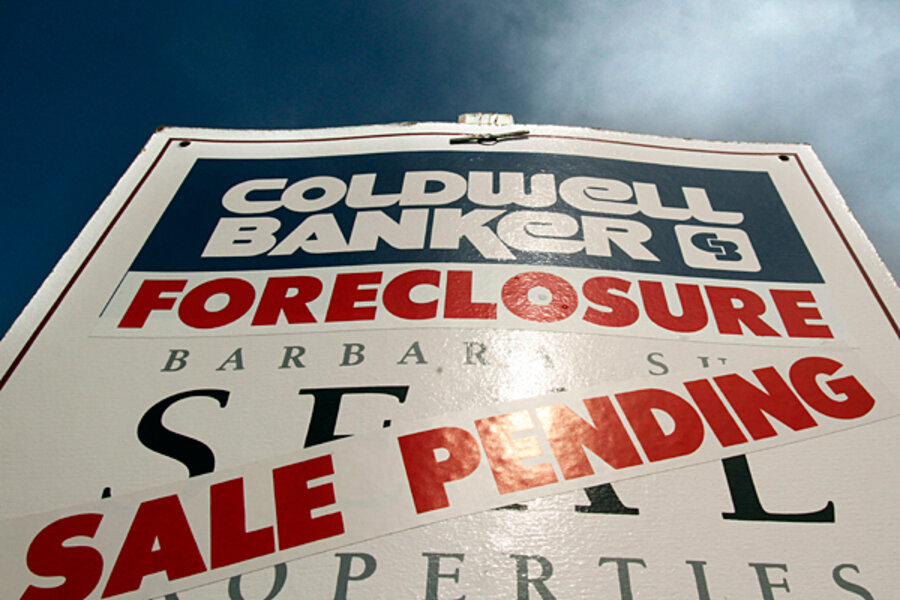The $26 billion mortgage settlement: who gets help and how
Loading...
| New York
The much heralded $26 billion settlement Thursday of a lawsuit brought by states’ attorneys general against major banks for their poor servicing of mortgages will help “a lot of families,” President Obama proclaimed.
So who is being helped?
The main thrust of the settlement is to help homeowners whose mortgages are “under water.” In other words, they owe more than their home is worth.
As part of the settlement, the banks agreed to lower the principal owed on loans by about $20,000 for 2 million people in the process of foreclosure, agreed to commit $3 billion to help homeowners refinance at 5.25 percent, and will send checks of about $1,800 to about 750,000 people who lost their homes to foreclosure between 2008 and 2011.
And how much will all of this help individual homeowners?
The short answer is that it could help some people stay in their homes because refinancing would lower their monthly payment. At the same time, the amount homeowners owe the bank would get closer to the market value of their home, giving them a greater incentive to try to pay the mortgage since having positive equity in their home would be closer at hand.
For example, the Atlanta-based credit counseling company, CredAbility, estimates that on a $200,000 30-year mortgage with a 5 percent interest rate, refinancing after the reduction in principle would lower the monthly payment from $1,073 to $966 a month, a savings of $107 a month.
While that may not sound like a lot of money, it can make a difference, says John McCosh, a spokesman for the firm.
“When someone comes to us for counseling about housing, we ask them if their main goal is to stay in the house,” says Mr. McCosh. “If they say yes, then we go through their expenses and income statements.”
Typically, CredAbility will make suggestions such as cutting back on cable television, eating out fewer times and maybe getting rid of their telephone land line or cell phone. Adding up all these little things can total as much as $200 to $300 a month, he says.
“When a lender sees how serious you are about trying to stay in your house, they may be willing to modify your loan,” he says. “Adding another $100 a month could make a difference especially for someone out of work for a few months or maybe where their safety net is gone.”
In fact, in the Atlanta area, McCosh says the average family pays about $1,200 a month for their mortgage payment. “Lowering that by $100 is almost 10 ten percent.”
As for the impact of lowering the principal due on a loan, the average client at CredAbility had a negative equity in their house of $27,000. A $20,000 reduction in principal starts to get the amount they still owe closer to what they can sell the house for.
“For most it will be close enough for them to stay and want to fight to keep their homes,” says Mark Cole, a vice president at CredAbility.
The reduction in principle “will help people with reduced income or who are underemployed,” says Lou Tisler, executive director of Neighborhood Housing Services of Greater Cleveland, a counseling service. “For those who are long-term unemployed, it’s still a jobs issue.”
Homeowners who have already lost their homes to foreclosure may get a check for $1,800.
“It maybe covers your moving costs,” says Jordan Estevao of the National People’s Action in Washington.
However, McCosh says even this relatively small amount of money may help someone. “Is it a down payment on another house? No, but you might need the money to pay utility bills or to help to repair a car,” he says.
“Someone who has been foreclosed on the last few years is likely still financially fragile, so $1,800 could make their life easier.”







